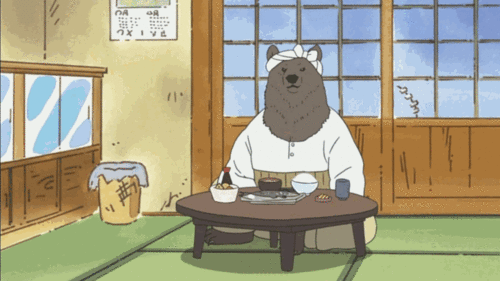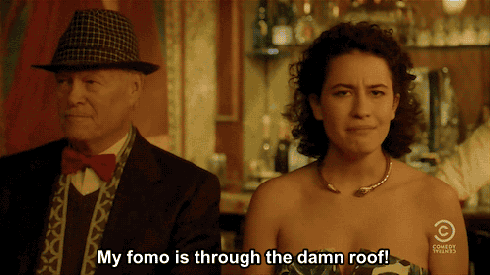Began reading: 9.3.2017
Completed reading: 18.3.2017
Overall rating: 3 stars
She won't rest until she's sent every walking corpse back to its grave. Forever.
If anyone had told Alice Bell that her entire life would change course between one heartbeat and the next, she would have laughed. From blissful to tragic, innocent to ruined? Please. But that's all it took. One heartbeat. A blink, a breath, a second, and everything she knew and loved was gone.
Her father was right. The monsters are real.
To avenge her family, Ali must learn to fight the undead. To survive, she must learn to trust the baddest of the bad boys, Cole Holland. But Cole has secrets of his own, and if Ali isn't careful, those secrets might just prove to be more dangerous than the zombies.
Alice in Zombieland by Gena Showalter is a fictional young adult novel that contains fantasy, paranormal and romance themes. It took me so long to get into this series, and I have mixed feelings about this book. Honestly, I had such high expectations after reading Firstlife, but this book didn’t live up to them and I’ll explain why as we go on.
Alice Bell would do anything for her family, especially for her little sister Emma. When Emma pressures Alice to ask her parents to attend a ballet performance, they agree despite knowing the dangers that come at night. After the performance, Alice and her family are involved in a freak accident, killing everyone except her. Although she couldn’t believe it, Alice witnessed zombies feasting on her parents. When she returns to school, Alice meets Cole Holland – the leader of the ‘bad boys’ and zombie slayer. With Cole, Alice learns to fight the zombies but she has difficulties with resisting the attraction that continues to grow between them. She fears the return of her now-zombie father, but when she comes face-to-face with him, will she be able to end him once and for all?
There were a few spelling and grammatical errors throughout the book, but the literary techniques that were employed almost counteracted this. Showalter utilised literary techniques such as humour, foreshadowing and the use of a nemesis (a group of, in this case). These devices assisted with creating a detailed, intriguing and well-developed novel. There were some interesting quotes scattered through the book, including:
I’d rather the world considered me crazy while I go down fighting than spend the rest of my life hiding from the truth (p. 8).
I flinched, his words echoing hollowly through my mind, at last breaking me. No, he wasn’t going to change his mind, and now, I didn’t want him to. He was done with me, and I was done with him. I’d tried, at least. He couldn’t say the same (p. 228).
I knew the devastation of loss, the sick feeling of realising someone you loved had suffered greatly (p. 317).
If only there was something I could say to comfort them, but I remembered my disdain for the doctors, nurses, friends and family who had offered me ridiculous platitudes after the accident.
You’ll be okay. They would carry on, yes, but they would never forget their own sense of mortality.
Time will heal you. Losing a loved one was like losing a limb. You were always aware of what you were missing, of what you used to have.
I’m sorry. I was, but those words wouldn’t really mean anything to any of them. Their friend was gone, and they wouldn’t see him again until they died. That thought wouldn’t comfort them tonight (p. 319).
More quotes from the book can be found here.
I must commend Showalter for her range of secondary characters. In my opinion, secondary characters are just as important as the protagonists – they help build the narrative and keep the plot flowing. A variety of different secondary characters make the story more realistic and generates a sense of diversity. In the book, there was a decent amount of secondary characters – not too many to make things confusing. The male and female groups presented two different spheres: the boys represented the world of zombies, while the girl group symbolised the ‘normal’ world. I thought that was interesting and clever, and it makes me wonder if these two spheres will ever merge (I know that it has already begun)…
Unfortunately, that’s pretty much all the positive stuff that I got from the book. One of the issues I had was the unrealistic atmosphere that arose from the plot itself. Why does everyone who finds out about the existence of zombies (e.g. Ali’s nana) just accept it with no questions asked? Why don’t they freak out or at least question this? I’m not sure about you guys, but I’d definitely think that they were losing it unless I saw some kind of proof. Why doesn’t anyone question their sanity?

Romance was to be expected, especially after Cole was mentioned in the blurb. The problem with it was that it resembled Twilight in a few ways: Cole was manipulative and somewhat abusive. He was possessive and just came on too strong. I did not like it. I believe that a romance should have a likeable love interest – I don’t understand the attraction associated with a manipulative and possessive lover. I know that Cole is portrayed as an aloof guy and that also flows into his relationship with Ali, but it didn’t work for me.

Another thing that really bothered me: stereotypes. I hate stereotypes! The way that some of the characters were described were so stereotypical that it was almost hilarious. Cole’s group of zombie slayers: badass boys, who enjoy causing trouble. How are they described? They have vibrantly coloured hair, body piercings, numerous tattoos and even ankle bracelets. I’m sorry, but this makes them sound like a 90s punk rock band. Just because they fight zombies doesn’t mean that they have to fill the stereotype of a ‘bad boy’. It was laughable and I couldn’t take them seriously.
I will take the blame for this one, but what was the point of the title? IT HAD NOTHING TO DO WITH ALICE IN WONDERLAND! Usually, I don’t really care whether or not the book’s title is relevant to the narrative but I found this title to be very misleading. I should have read some reviews before purchasing this series but I was just so excited. It hardly has any connection to Alice in Wonderland, except for the rabbit cloud and Alice’s name. I’m not the only one who thought that this series would be a dark retelling of the classic tale, but we were deceived. I don’t think I will forgive myself for not checking out the reviews before buying the books. I’m just so mad!

Anyway, let’s move on! My favourite character was Kat, as she was loyal, bubbly, optimistic and ruthless. She was a bit over-the-top for me, but her overall personality was the most agreeable. Emma was a notable character – why did she have to die?
WARNING: SPOILER* I’m not very good at discovering antagonists before I get to the plot twist, but I managed to find out who it was long before it was revealed. I had always suspected Dr. Wright! Well, not always but I knew something was up when she appeared at Reeve’s house. I’m also not a fan of either Justin or Jaclyn – I knew that they were strange from the beginning, especially when Jaclyn gave Ali all of those death stares. Here’s a question: why the heck didn’t Ali know that they were siblings?
My favourite part of the book was the final battle at Anima Industries. It was emotional, suspenseful and full of surprises. I was on my toes the entire time! Final battle scenes are always exciting because they reveal so many plot twists. Many of the twists that occurred during this scene were unexpected, and I loved it!
Recommendation time! If you like the Twilight series by Stephenie Meyer, the Reaper Diaries series by Michele Vail, and The Callahan Chronicles by J.B. Thomas, you will love this book. Also, I recommend this book to anyone who likes The Walking Dead tv series, Buffy the Vampire Slayer tv series, Dawn of the Dead, and Pride and Prejudice and Zombies.
I will also be reviewing the rest of the White Rabbit Chronicles series: Through the Zombie Glass, The Queen of Zombie Hearts, and A Mad Zombie Party. Keep an eye out for those!
Happy reading!
Like and follow!
Instagram: @thebasicbookworm
Twitter: @BasicBookworm








